Identify these 5 Iconic Trees from the North!
Trees and forests hold a special place in many of our hearts, and for good reason. Our legends and stories are filled with trees, we spend our free time hiking through forests, passed our childhood climbing high among branches, and our very houses are often built from them. Despite this deep connection to trees and the forest, how well do most of us know the trees around us? Being able to identify trees around you can help you feel more connected to the land, appreciate the ecosystem, and it is a fun exercise too! WIth that being said, here are five iconic trees from the Northern Hemisphere that you should know!
Birch Tree
Birch trees (Betula sp.) are common throughout the Northern Hemisphere and are truly iconic in Sweden. There are two main species: the mountain birch (Betula pubescens) in the north and the silver birch (Betula alleghaniensis) throughout most of the country. The silver birch is taller and wider, but they look very similar. Birch trees are not only the “belle of the fall” when it comes to their incredible yellow leaves and stark black-and-white bark, but their wood and bark are also used in medicine, for building, making tools, and firewood. Learn more about Birch trees here!
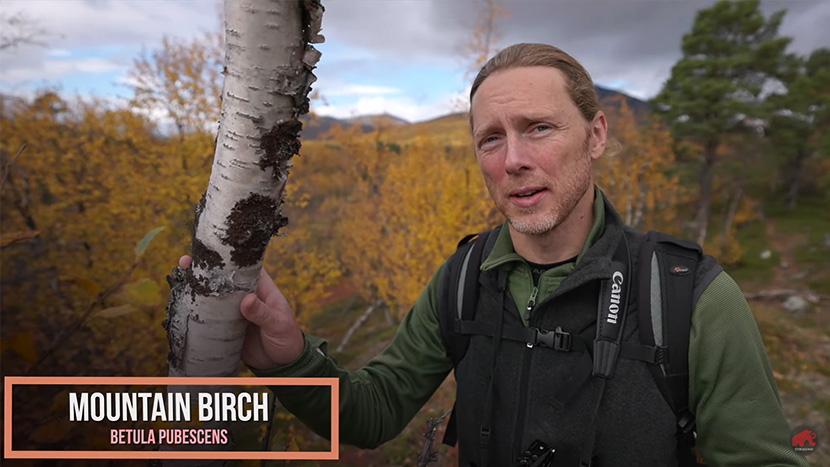
Identify Birch Trees
Birch trees are possibly one of the easiest trees to identify. Their main characteristics are:
- White, silvery bark with dark spots. It is also flaky or “papery”
- Leaves are oval/triangular, toothed, green in summer, and yellow in fall
- They have catkin flowers (clusters of drooping flowers)
- The iconic wintergreen smell when you break off a small branch
Scots Pine
The Scots pine (Pinus sylvestris) is a coniferous tree with a pretty wide distribution in northern latitudes, and it is actually the only native pine tree in Sweden! This tree is really important to the forestry industry, making up around 39% of the trees harvested from here. You can use its needles to make pine needle tea that is high in vitamins A and C!
Identify Scots Pine
The main identifying factors for Scots pine are:
- Needles are long and slender (~4-7.5 cm / 1.5 to 3 inches)
- Needles are bright green and grow in clusters of two or three
- Bark is reddish-brown/orange-brown when young and becomes more deeply furrowed and darker as the tree ages
- The bark forms diamond-shaped patterns
- The branches grow in a swirl formation from the trunk and grow straight out/slightly upwards
- The pine cones are oval or egg-shaped and get about as long as the needles
- Cones are light brown and have a small prickle at the tip of each scale
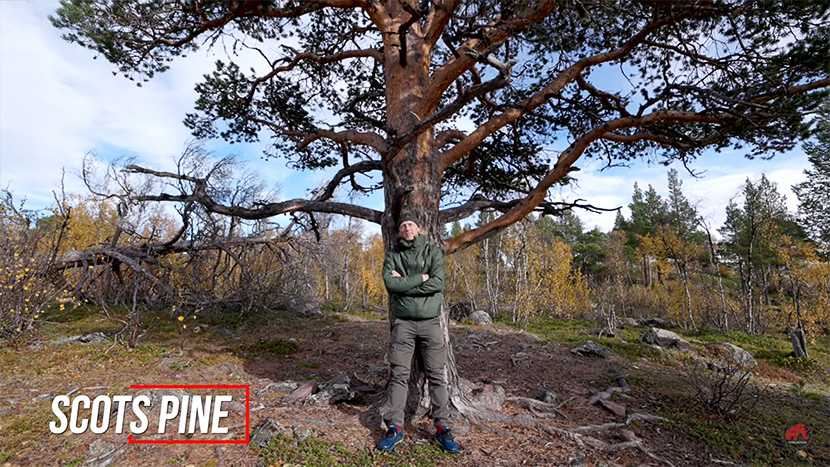
Norway Spruce
The Norway spruce (Picea abies) is the original Christmas tree! Today, it is another coniferous tree that is important in the Northern European forestry industry. This tree is native here, but was also planted here in not-so-natural large monoculture forests. Interestingly, these dark dense woods with little underbrush and plentiful fungi are actually the setting for many European fairy tales. Though at the time this seemed like good practice, planting so many of the same tree together is now causing huge losses as foresters fight against hordes of beetles that are enjoying this all-out buffet. Read more about Norway Spruce and bark beetles.
Identify Norway Spruce
If you come across a dark uniform forest in Northern Europe, you can probably bet that they are Norway Spruce, You can also recognize Norway Spruce by the following:
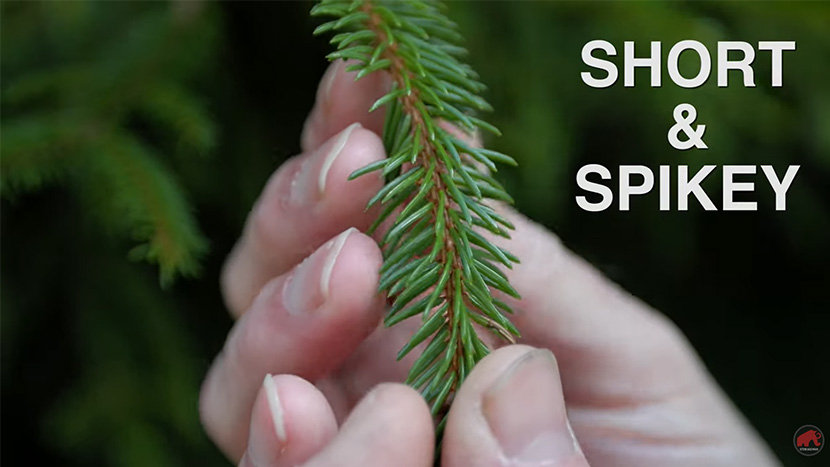
- Shorter, spiky needles (~1.3-2.5 cm/0.5 -1 inch) that grow right from the branch (not in clusters)
- Branches grow densely and droop downwards
- Bark is grayish-brown, thin, and smooth when the tree is young. The bark becomes rougher and develops scaly plates as it ages
- The cones hang down from the branches like a pendulum (known as pendulous cones) and are much longer than the needles (~7.5-15 cm/3 to 6 inches)
- The cones have thin diamond-shaped scales and are initially green, turning brown as they mature.
Pedunculate Oak
Oak trees are extremely important in their ecosystems and have been key to human survival in the past as well! The Pedunculate oak was also the first oak tree identified by none other than Carl Linnaeus! This is probably one of the most easily recognizable trees thanks to their distinct leaves and acorns! Acorns are highly nutritious so they are key to helping many animals survive harsh winters, but people can eat them too! Though they are full of tannins and quite bitter, you just need to leach the tannins out and you can make acorn flour!
Identify Pedunculate Oak
- Oaks are known for looking sturdy and impressive. They can grow more than 30 meters/100 feet!
- Leaves are broad with rounded lobes with deep sinuses between them.
- The acorns are oval-shaped with a small, elongated stalk (peduncle) at their base.
- Acorns are brown and are normally about 2.5-5 cm/1-2 inches long
- The bark is grayish-brown, rough, deeply furrowed, and scaly or platy
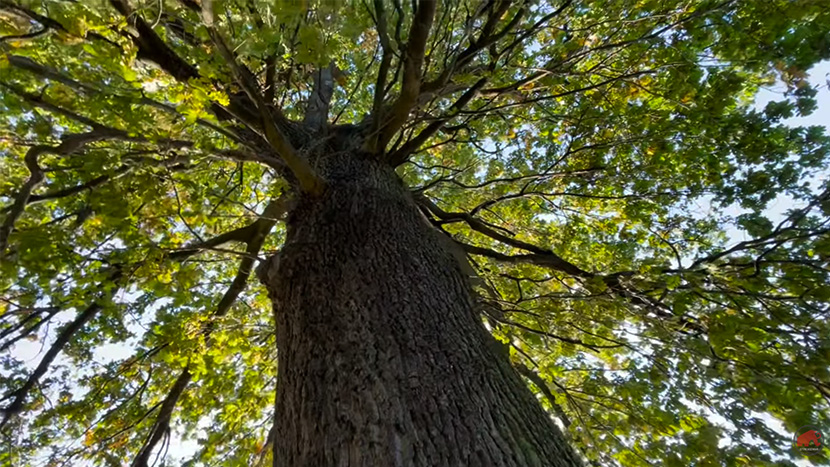
Rowan Tree
The Rowan tree is a centerpiece to many myths and legends. In the past, people believed it had protective properties and planted them near entrances to homes. Though most people think you can’t eat the berries, you can under the right conditions! This is because the parasorbic acid found in the berries is bad for your liver, however, the first deep frost (or heating them on the stove) will convert it into Sorbic acid, making them edible and delicious!
Identify Rowan Trees
- They grow from ~4.5m/15ft to ~12m/40ft, depending on the species
- The bark is smooth and gray on young trees but gets scaly as it ages
- Flowers are small, creamy-white, 5 petalled, and grow in clusters
- Berries are bright-red or orangish
- Before the first big frost the berries are extremely bitter (and toxic). Later they will be sweeter (eat with caution as in the note above)
- Leaves have one long petiole with multiple serrated and paired leaflets.
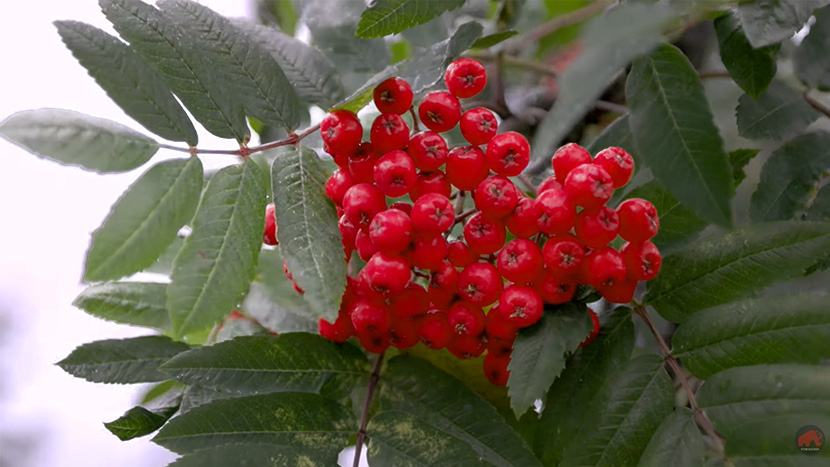
Conclusion
Being able to identify trees is a fun skill to learn, but more than that it ties into the importance of knowing one’s land and environment. Going out and recognizing the plants and animals in the place we live helps us form a deeper connection with nature and sense of place. So, with that in mind, we challenge you to go out into your “backyard” and see how many trees you can identify!

